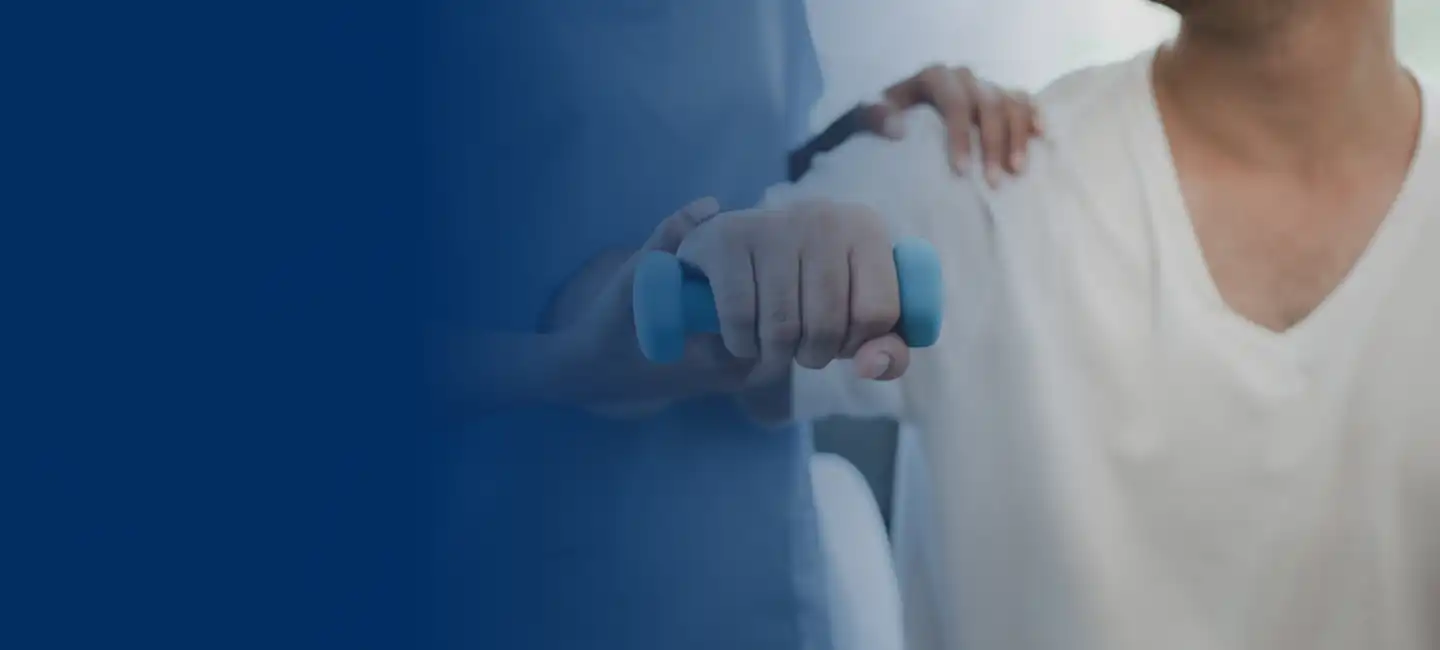Dr. Mohan’s Centre uses different physiotherapy methods to suit each patient. These include:
Manual Therapy
This hands-on method eases pain and boosts circulation, helpful for those with poor blood flow.
Therapeutic Exercise
Custom workouts build strength, improve flexibility, and enhance overall fitness.
Aquatic Therapy
Water-based exercises reduce joint strain while offering resistance. This is great for people with joint pain or nerve issues.
Posture and Movement Tips
Learning good posture and movement helps prevent injuries and supports daily activities.
Wax Therapy
Wax therapy is used to relieve joint stiffness and pain. Warm wax soothes affected areas, improves blood flow, and reduces discomfort, making it especially helpful for diabetic patients with arthritis or joint stiffness.
Mobility Exercises in the IP Ward
In the inpatient (IP) ward, mobility exercises are tailored to help patients regain movement and independence. These include guided movements, stretching, and walking exercises designed to improve strength and flexibility while preventing complications from prolonged immobility.
Traction
Traction therapy is used to relieve pressure on joints and spine, promoting better alignment and reducing pain. This is particularly beneficial for patients experiencing back pain or joint strain due to diabetes-related complications.
Interferential Therapy (IFT)
IFT is a non-invasive treatment that uses electrical currents to reduce pain and inflammation. It helps improve circulation, manage neuropathic pain, and enhance muscle function, making it an effective tool in diabetes care.
Here are key points on when people with diabetes should seek physiotherapy care:
- Managing Diabetic Neuropathy
- If you experience numbness, tingling, or pain in your feet or hands due to nerve damage, physiotherapy can help improve blood flow, reduce discomfort, and restore mobility.
- Foot Care and Balance Issues
- People with diabetes are at risk of foot ulcers and balance problems. Physiotherapy can help strengthen muscles, improve balance, and teach safe foot exercises.
- Joint Stiffness (Diabetic Stiff Hand Syndrome)
- If you notice stiffness in your hands, shoulders, or other joints, physiotherapy can improve flexibility, mobility, and function through guided stretches and exercises.
- Posture and Movement Issues
- Diabetes can cause posture and gait problems over time. Physiotherapy can help correct your posture and walking pattern to prevent strain and injuries.
- Exercise Guidance for Blood Sugar Control
- Physiotherapists can design safe and effective exercise routines tailored to help control blood sugar, improve strength, and support overall health.
- Post-Surgery or Injury Recovery
- If you’ve had surgery or an injury, healing may be slower due to diabetes. Physiotherapy helps speed up recovery, reduce complications, and prevent further issues.
- Chronic Pain or Frozen Shoulder
- Conditions like frozen shoulder or chronic back and neck pain are common in people with diabetes. Physiotherapy can ease pain and restore movement through targeted treatments.
- Obesity and Weight Management
- If you’re overweight, physiotherapy can provide low-impact exercises that support weight loss without risking joint injuries or fatigue.
- Preventing Complications
- Regular physiotherapy can prevent complications like muscle weakness, poor circulation, or foot deformities by promoting healthy movement and exercises.
- Stress and Mental Health Support
- Managing diabetes can be stressful, and physiotherapy often incorporates relaxation techniques like breathing exercises to reduce stress and improve well-being.
At Dr. Mohan’s Diabetes Specialties Centre, care is personalized. Experts guide you on how to include exercise in your routine. This helps you stay in control and reduce risks.
Managing diabetes takes effort, but the rewards are worth it. Physiotherapy empowers you to live better and stay healthier. Make it a part of your plan—because every step you take leads to better health.


